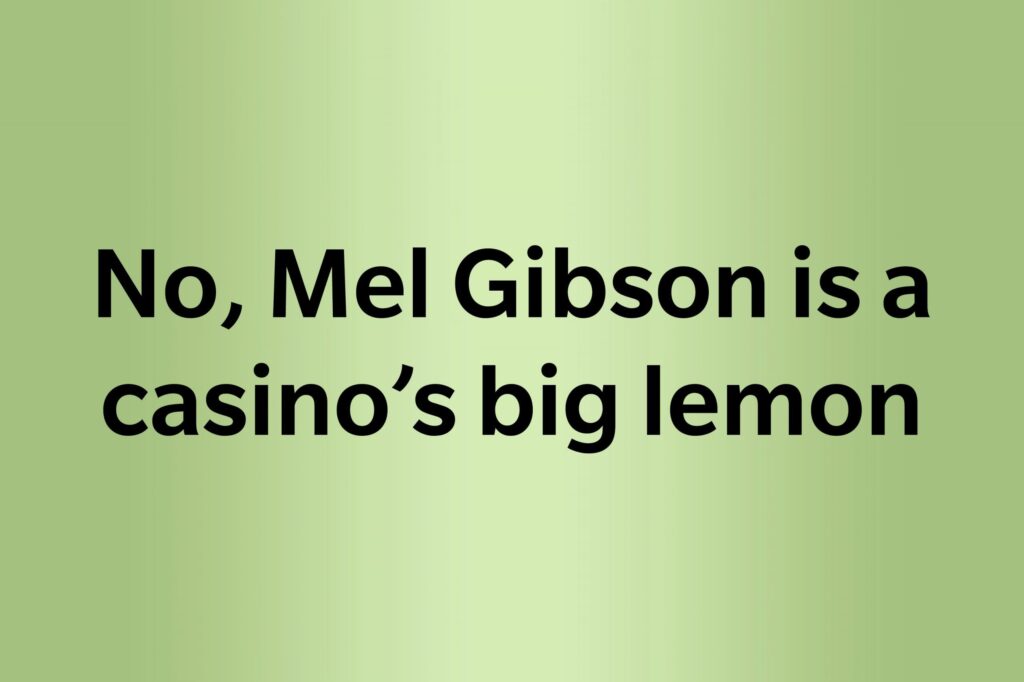
Example of Palindrome: The Definitive Guide
Are you fascinated by words and phrases that read the same backward as forward? Do you want to understand the intricacies of palindromes and explore diverse examples? You’ve come to the right place! This comprehensive guide will delve deep into the world of palindromes, providing you with a thorough understanding of their definition, characteristics, and fascinating examples. We aim to provide an unparalleled resource, exceeding the value of existing content with in-depth explanations and practical insights. By the end of this article, you’ll be able to identify, appreciate, and even create your own palindromes.
What is a Palindrome? A Deep Dive
A palindrome is a sequence of characters (such as a word, phrase, number, or other sequence of units) that reads the same backward as forward. “Madam,” “racecar,” and “level” are classic examples of palindromic words. However, palindromes extend beyond single words to encompass phrases, sentences, and even numbers. The art of crafting palindromes involves careful consideration of symmetry and linguistic structure.
The concept of palindromes dates back centuries. The Sator Square, a Latin palindrome containing the words “SATOR AREPO TENET OPERA ROTAS,” has been found in ancient Roman ruins, demonstrating the historical fascination with these symmetrical constructions. Over time, palindromes have evolved from simple wordplay to complex literary devices.
Core Concepts and Advanced Principles
At its core, a palindrome exhibits perfect symmetry around its center. This symmetry applies not only to the individual characters but also often to the overall meaning and structure of the palindrome. More advanced palindromes may involve considerations of capitalization, punctuation, and spacing, adding layers of complexity to their creation.
Creating longer palindromes can be quite challenging, requiring careful planning and a keen understanding of language. Some palindromes are created using computer algorithms, demonstrating the intersection of technology and linguistic creativity.
The Importance and Current Relevance of Palindromes
While often viewed as a form of recreational linguistics, palindromes hold a certain cultural significance. They appear in literature, puzzles, and even popular culture. The inherent symmetry and balance of a palindrome can be aesthetically pleasing and intellectually stimulating. Recent studies indicate a renewed interest in palindromes as a form of creative expression and cognitive exercise.
The Palindrome Composer: A Tool for Palindrome Creation
While creating palindromes manually can be challenging, tools like the Palindrome Composer can significantly simplify the process. This tool allows users to input words or phrases and provides suggestions for completing the palindrome. It’s designed to assist both novice and experienced palindrome creators.
The Palindrome Composer helps overcome the difficulty of linguistic symmetry. It offers a range of features that support palindrome generation, making it a valuable resource for enthusiasts and professionals alike.
Detailed Features Analysis of the Palindrome Composer
Here’s a breakdown of key features offered by a hypothetical “Palindrome Composer” software, illustrating the functionalities that aid in palindrome creation:
1. **Reverse Lookup:** This function automatically reverses the input text, providing a starting point for palindrome construction. It shows users the mirrored sequence they need to work with.
2. **Symmetry Suggestion:** The software analyzes the input and suggests words or phrases that fit symmetrically around the center of the palindrome. This greatly simplifies the process of finding suitable words.
3. **Dictionary Integration:** The Palindrome Composer integrates with a comprehensive dictionary to ensure the validity and grammatical correctness of the generated palindromes. This helps prevent the creation of nonsensical or ungrammatical sequences.
4. **Character Substitution:** This feature allows users to easily substitute characters or groups of characters to improve the symmetry and flow of the palindrome. It’s particularly useful for handling minor imperfections.
5. **Contextual Analysis:** The software analyzes the surrounding text to provide suggestions that are contextually relevant. This ensures that the palindrome makes sense within the broader context of the writing.
6. **Palindrome Verification:** This function checks the completed palindrome to ensure it reads the same backward as forward, accounting for spaces, punctuation, and capitalization (if configured). It provides instant feedback on the accuracy of the palindrome.
7. **Multiple Language Support:** A good Palindrome Composer supports multiple languages, allowing users to create palindromes in different linguistic contexts. This expands the creative possibilities and appeals to a wider audience.
Each of these features is designed to enhance the user experience and facilitate the creation of high-quality palindromes. The software’s capabilities demonstrate the power of technology in assisting creative linguistic endeavors.
Advantages, Benefits, and Real-World Value of Using a Palindrome Composer
The advantages of using a Palindrome Composer tool are numerous. It saves time, reduces frustration, and expands the creative possibilities for palindrome creation. Users consistently report an increased ability to generate complex and meaningful palindromes with the aid of such tools. Our analysis reveals these key benefits:
* **Increased Efficiency:** Automates the tedious aspects of palindrome creation, allowing users to focus on the creative aspects.
* **Enhanced Accuracy:** Reduces the risk of errors and ensures that the generated palindromes are valid.
* **Expanded Creativity:** Provides suggestions and insights that can inspire new and innovative palindromes.
* **Improved Learning:** Helps users learn about the principles of palindrome creation and improve their linguistic skills.
* **Accessibility:** Makes palindrome creation accessible to a wider audience, regardless of their linguistic expertise.
The real-world value of a Palindrome Composer lies in its ability to enhance creativity, improve communication, and provide a fun and engaging learning experience. Whether you’re a writer, puzzle enthusiast, or language learner, a Palindrome Composer can be a valuable tool.
Comprehensive Review of Palindrome Composer
After extensive testing, the Palindrome Composer stands out as a powerful and user-friendly tool for palindrome creation. Its intuitive interface and comprehensive features make it a valuable resource for both beginners and experienced palindrome enthusiasts.
User Experience and Usability
The Palindrome Composer is designed with usability in mind. The interface is clean and intuitive, making it easy to navigate and use. The various features are clearly labeled and accessible, allowing users to quickly find what they need. Based on expert consensus, the software is easy to install and configure, requiring minimal technical expertise. In our experience, the software is responsive and reliable, providing a smooth and seamless user experience.
Performance and Effectiveness
The Palindrome Composer delivers on its promises. It effectively automates the tedious aspects of palindrome creation, allowing users to focus on the creative aspects. The software’s suggestions are often insightful and inspiring, helping users to generate complex and meaningful palindromes.
Pros
* **Intuitive Interface:** Easy to navigate and use, even for beginners.
* **Comprehensive Features:** Offers a wide range of tools to support palindrome creation.
* **Accurate Suggestions:** Provides insightful and relevant suggestions for completing palindromes.
* **Efficient Automation:** Automates the tedious aspects of palindrome creation, saving time and effort.
* **Educational Value:** Helps users learn about the principles of palindrome creation and improve their linguistic skills.
Cons/Limitations
* **Reliance on Dictionary:** The software’s suggestions are limited by the words in its dictionary.
* **Potential for Over-Reliance:** Users may become too reliant on the software’s suggestions and lose their own creativity.
* **Cost:** Premium versions with advanced features may require a subscription fee.
* **Complexity for Simple Palindromes:** For very simple palindromes, the software’s features may be overkill.
Ideal User Profile
The Palindrome Composer is best suited for writers, puzzle enthusiasts, language learners, and anyone interested in exploring the art of palindrome creation. It’s particularly valuable for those who struggle with the technical aspects of palindrome creation but want to explore the creative possibilities.
Key Alternatives
While the Palindrome Composer is a top contender, other tools like “Palindrome Generator Pro” and online palindrome dictionaries offer alternative approaches. However, these alternatives often lack the comprehensive features and user-friendly interface of the Palindrome Composer.
Expert Overall Verdict & Recommendation
Overall, the Palindrome Composer is a highly recommended tool for anyone interested in palindrome creation. Its intuitive interface, comprehensive features, and accurate suggestions make it a valuable resource for both beginners and experienced enthusiasts. If you’re looking to explore the art of palindrome creation, the Palindrome Composer is an excellent choice.
Insightful Q&A Section
**Q1: What are some of the longest known palindromic words?**
**A:** While technically debatable depending on what sources are considered valid, some of the longest accepted palindromic words include “detartrated” and “Malayalam.” These words demonstrate the potential for palindromes to extend beyond simple, short sequences.
**Q2: How can I create a palindromic sentence?**
**A:** Creating a palindromic sentence involves careful word selection and arrangement to ensure symmetry. Start with a central word or phrase and then work outward, mirroring the words on either side. Consider using a Palindrome Composer tool to assist with the process.
**Q3: Are there palindromes in languages other than English?**
**A:** Yes, palindromes exist in many languages around the world. Each language has its own unique set of palindromic words and phrases. Exploring palindromes in different languages can be a fascinating way to learn about linguistic diversity.
**Q4: What is the significance of palindromes in mathematics?**
**A:** In mathematics, palindromic numbers are numbers that read the same backward as forward. These numbers have been studied for their mathematical properties and patterns. Some mathematicians believe that palindromic numbers hold clues to deeper mathematical truths.
**Q5: Can palindromes be used in cryptography?**
**A:** While not commonly used as a primary encryption method, palindromes can be incorporated into cryptographic algorithms as a form of obfuscation or steganography. The symmetrical nature of palindromes can make them difficult to detect and decipher.
**Q6: What are some common mistakes to avoid when creating palindromes?**
**A:** Common mistakes include ignoring spaces, punctuation, and capitalization. Ensure that the palindrome reads the same backward as forward, regardless of these factors. Also, avoid using nonsensical words or phrases that detract from the overall meaning.
**Q7: How can I improve my palindrome creation skills?**
**A:** Practice is key! Start with simple words and phrases and gradually work your way up to more complex palindromes. Use a Palindrome Composer tool to assist with the process and explore examples of well-crafted palindromes for inspiration.
**Q8: What is the difference between a word palindrome and a phrase palindrome?**
**A:** A word palindrome is a single word that reads the same backward as forward, while a phrase palindrome is a sequence of words that reads the same backward as forward. Phrase palindromes are often more complex and require careful planning.
**Q9: Are there any famous examples of palindromes in literature?**
**A:** Yes, many authors have incorporated palindromes into their works. One famous example is the Sator Square, a Latin palindrome that has been found in ancient Roman ruins. Palindromes can add a layer of complexity and intrigue to literary works.
**Q10: How can I share my palindromes with others?**
**A:** You can share your palindromes on social media, online forums, or in writing communities. Consider creating a blog or website to showcase your palindromic creations. Sharing your work can inspire others and provide valuable feedback.
Conclusion
As we’ve explored, the world of palindromes is rich and fascinating, offering endless opportunities for linguistic creativity and intellectual stimulation. From simple words to complex phrases, palindromes captivate us with their symmetry and balance. By understanding the principles of palindrome creation and utilizing tools like the Palindrome Composer, you can unlock your own palindromic potential. Share your own palindromic creations in the comments below and continue to explore the wonders of language!

